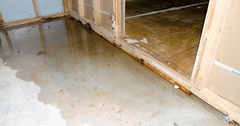
In the intricate network of plumbing systems that deliver water to our homes and businesses, ensuring water quality is paramount. Backflow, the unwanted reversal of water flow, poses a significant risk to water safety by allowing contaminants to enter the potable water supply. Understanding the risks associated with backflow and implementing preventive measures is crucial for safeguarding water quality. In this comprehensive guide, we'll explore the concept of backflow, the potential hazards it poses, and the various preventive measures, including the installation of backflow prevention devices.
Understanding Backflow
What is backflow?
Backflow occurs when the normal flow of water in a plumbing system is reversed, allowing non-potable water to mix with the clean, potable water supply. This unwanted reversal can result from back-siphonage or back-pressure.
Back-Siphonage
Back-siphonage happens when there is a drop in water pressure in the supply system. This can occur during water main breaks, firefighting activities, or when a nearby hydrant is opened, creating a vacuum that draws contaminants back into the water supply.
Back-Pressure
Back-pressure occurs when the pressure in a downstream piping system exceeds the pressure in the supply system. This can happen when a pump is used to boost water pressure for irrigation systems, fire suppression systems, or industrial processes.
Risks Associated with Backflow
Contaminant Ingress
The primary risk of backflow is the introduction of contaminants into the potable water supply. These contaminants can include chemicals, fertilizers, pesticides, bacteria, and other substances harmful to human health.
Health Hazards
Contaminated water can lead to severe health hazards, ranging from gastrointestinal issues to more serious illnesses. Vulnerable populations, such as infants, the elderly, and individuals with compromised immune systems, are particularly at risk.
Regulatory Compliance
Backflow prevention is not only about health and safety but also about regulatory compliance. Many municipalities and water authorities require the installation of backflow prevention devices in specific situations to protect the public water supply.
Backflow Prevention Measures
Air Gaps
Air gaps are physical separations between the water outlet and the flood-level rim of a fixture or container. This gap prevents backflow by creating an open space that breaks the connection between the potable water supply and potential contaminants.
Backflow Preventer Devices
Backflow preventer devices are mechanical devices designed to prevent backflow in specific situations. There are different types of backflow preventers, including:
-
Pressure Vacuum Breakers (PVB): Installed above ground, PVBs prevent back-siphonage by opening when the pressure drops, creating an air gap and stopping the reverse flow.
-
Double Check Valve Assembly (DCVA): Consisting of two check valves, DCVAs prevent both back-siphonage and back-pressure. They are suitable for medium-hazard applications.
-
Reduced Pressure Zone Assembly (RPZ): More robust and suitable for high-hazard applications, RPZs provide the highest level of protection by incorporating two check valves and a relief valve.
Regular Testing and Maintenance
Installing backflow preventers is not a one-time task. Regular testing and maintenance are essential to ensure these devices function correctly. Many municipalities mandate annual testing of backflow preventers to verify their effectiveness.
Cross-Connection Control Programs
Cross-connection control programs involve identifying and managing potential cross-connections in the plumbing system. This includes assessing the risks associated with different plumbing configurations and implementing measures to eliminate or control these connections.
Backflow Prevention in Different Settings
Residential Settings
In residential settings, backflow prevention devices are commonly required for irrigation systems, boilers, and fire sprinkler systems. Homeowners should be aware of local regulations and consider installing backflow preventers to protect against potential risks.
Commercial and Industrial Settings
Commercial and industrial facilities often have more complex plumbing systems with higher risks of backflow. In these settings, a thorough assessment of potential cross-connections and the installation of appropriate backflow preventers are crucial for maintaining water quality.
Municipal Water Supplies
Municipalities play a critical role in ensuring the safety of the public water supply. Implementing comprehensive cross-connection control programs, regular testing, and the installation of backflow preventers in key locations contribute to a robust backflow prevention strategy.
Tips for Effective Backflow Prevention
-
Know Local Regulations:
Familiarize yourself with local regulations regarding backflow prevention. Different areas may have specific requirements, and compliance is essential to protect water quality and ensure public health. -
Regularly Inspect Devices:
Regular inspection of backflow preventer devices is crucial. Check for signs of wear and tear, corrosion, or damage, and schedule professional testing to verify their effectiveness. -
Educate Residents and Staff:
In residential and commercial settings, educate residents and staff about the importance of backflow prevention. Encourage responsible water practices and prompt reporting of any plumbing issues that could compromise water quality. -
Work with Certified Professionals:
Certified professionals should carry out the installation, testing, and maintenance of backflow preventers. Ensure that the individuals responsible for these tasks are trained and qualified to guarantee the proper functioning of the devices.
Backflow prevention is a critical aspect of maintaining water quality and ensuring the safety of our water supply. Understanding the risks associated with backflow, implementing preventive measures, and adhering to local regulations are essential steps toward creating a resilient and secure plumbing system. By embracing comprehensive backflow prevention strategies, we contribute to the protection of public health and the preservation of our most precious resource – clean and safe water.